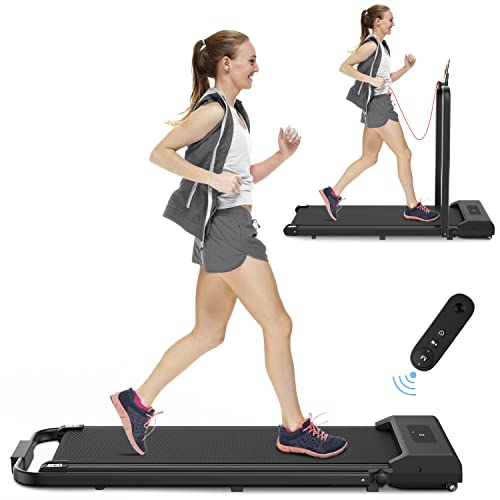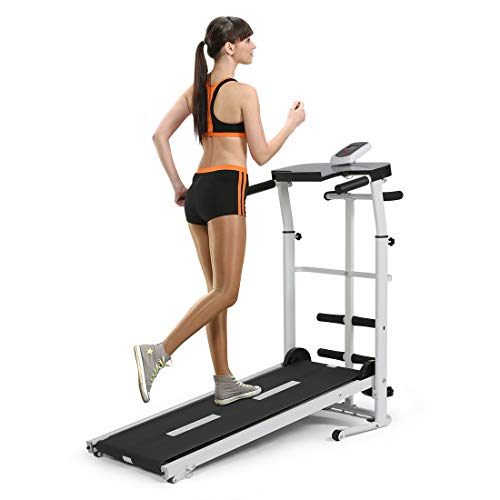
Understanding the Treadmill Electric Motor

The motor is a key component of any treadmill. It converts energy from your outlet into motion that gets the belt moving.
Understanding the motor specs is essential when you are looking for the ideal treadmill to achieve your fitness goals. This article will cover key aspects such as continuous and peak duty, power rating system, warranty, durability factors and maintenance pointers.
How does a motor work
The motor is the workhorse of any treadmill that allows it to move the belt to enable you to walk, run or jog. It's also the most important part of the machine and plays a major role in its performance as well as durability. In order to make a sound purchase it is important to understand how motors work.
There are two primary types of treadmill motors: DC and AC. Each has its own distinct advantages and disadvantages, yet they both work in a similar way. DC motors can be used in a variety of applications such as robotics and
electric treadmill amazon cars. They are extremely efficient durable, long-lasting, and easy to control. AC motors are, on the contrary, are used in treadmills as well as other fitness equipment. DC motors are more affordable however AC motors offer higher performance and have longer lifespan.
Treadmills are available in different dimensions and specifications, based on the requirements of each user. These factors include the size of motor power, power output, noise level, and price. There are treadmills that are manual that don't use a motor at all and are instead powered by the user's feet.
Motor size is among the most frequently mentioned terms in treadmill shopping, but it can be difficult to understand what it actually means. A motor's size is based on the amount of energy it produces at its highest. This figure is often called horsepower (HP) which is a measure of power that reflects the amount of energy it can generate.
The speed of a treadmill's motor can be controlled in various ways, including with a variable resistor or a pulse width modulation controller. The pulse width modulation controller regulates the amount of current flowing through the treadmill motor, thereby altering the speed. These controls are available on most treadmills, but they aren't as prevalent in gyms at home.
Whether you are an occasional walker or a serious runner, it's important to know the operation of a
treadmill electricity motor prior making a choice. Understanding what each component does will help you avoid buying an inferior treadmill.
Motor size
The motor size is often a nebulous part of the specifications when looking for a treadmill. It's crucial to understand that while bigger is more efficient, you should know what the horsepower specification is for your workout.
The most common misconception is that the peak horsepower rating (PHP) on treadmills is a measure of the quality of the treadmill. This isn't true since the treadmill's maximum power will only last for a brief period of time before the motor's lifespan is reached. The most accurate measurement is continuous horsepower (CHP), which measures how much power a treadmill's motor is able to produce for as long as it is not deteriorating.
Another spec worth paying focus on is the motor's RPM rating. This is the amount of revolutions a motor will perform per minute. This is a measure of the motor's power and ability to run the belt with ease. Low RPM ratings may cause a disruption in the speed of the belt which can impact the treadmill experience.
There are two types of treadmill motors, DC and AC. While DC motors are commonly utilized in fitness equipment at home, AC motors are often found in commercial gyms and are more designed for high-use environments. DC motors are powered by direct current electricity which creates an
fold up electric treadmill field that interacts with permanent magnets within the motor to produce motion.
If you're in search of a more durable treadmill motor, you should to go with an AC motor. AC motors are more robust and can withstand the wear and tear that comes with repeated use throughout the day. They are also less susceptible to overheating than DC motors. However, if you're on a tight budget, you can still find top treadmills that have DC motors that can meet your fitness needs effectively.
Motor Warranty
Verify the warranty of the motor when you're looking for the treadmill. A quality treadmill motor is one that lasts for 10 years or more. A longer warranty timeframe indicates the quality of the motor that is less likely to fail over time. Be aware that different treadmill manufacturers offer different warranties on their motors, and it's important to research the companies before you purchase.
The motor is the engine that runs the
Folding Treadmill with electric incline belt that keeps you running, walking, or jogging. A motor that is of better quality will last longer however all treadmills require regular maintenance and cleaning in order to keep it working properly. Cleaning and lubrication are the most frequent maintenance tasks. It is also recommended that you use a surge protector to reduce the risk electrocution.
A good treadmill warranty can save you from costly repairs in the future. The majority of treadmills come with a standard warranty but you can buy an extended or a lifetime warranty for more assurance. These warranties include the motor, parts and labor, but not taxes, shipping and installation costs.
When looking for treadmills, you'll need to find out whether the motor is classified as continuous or peak duty. Continuous-duty motors are designed to run at a constant rate without overheating. This kind of motor is usually preferred for home use as it is quieter and consumes less energy than a peak-duty treadmill. The size of a motor will tell you if it is designed for continuous-duty. The smaller the motor is, the more it is designed to perform continuous duty.
A treadmill motor that's rated as peak-duty is engineered to run at a maximum speed for 15 minutes before it overheats. It's similar to a sprinter that runs at their best for a brief period before slowing down. You can check a treadmill's peak-duty rating using a multimeter to gauge the amount of current flowing through its terminals. A zero reading suggests an unbalanced motor, while high readings indicate an open motor.
Maintenance of the motor
As with any product the treadmill motor's reliability will eventually deteriorate. You can extend the lifespan of your treadmill by observing the routine of regular maintenance and paying attention to warning signals. These include overheating, odd sounds, burning smells, malfunctioning incline and speed controls and sparks. These warnings must be considered seriously and taken action on immediately.
Treadmill motor service might seem daunting at first, however, it's actually easy. Start by unplugging the treadmill and then removing the motor cover. You can then utilize a multimeter to test for electrical problems. You should also be able to remove any dust, hair or other debris that has been accumulating inside the motor. This will ensure that the motor is running efficiently and doesn't get damaged too fast.
Once you've figured out what's wrong with your treadmill, you'll be able to take steps to repair it. If you're not comfortable performing these repairs yourself, think about finding a treadmill repair specialist in your area. Local service providers can provide fast and efficient service to cut down the time you spend without your treadmill. They can also offer solutions that are suited to your particular area.
If your treadmill isn't getting the power it needs to function effectively, you may need to replace the motor. This can be done by ordering a new replacement and putting it in the correct position. Make sure you adhere to the manufacturer's directions and consult your owner's manual for troubleshooting tips. Also, remember to unplug the treadmill when it is not in use, and consider purchasing a surge protector to protect it from power surges. If you don't utilize your treadmill as frequently as you should, you may want to add an additional belt clip. This will stop the belt from stretching. This will ensure that the belt isn't too tight or loose and will prevent premature wear on the motor. To ensure that the deck is in good shape it is recommended to also keep it lubricated regularly. It's also a good idea, in case your original motor fails, to buy a backup.



